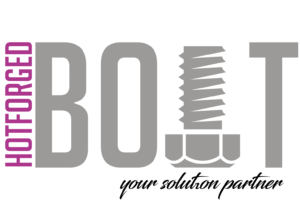Hot forged bolts are commonly produced according to specific DIN (Deutsches Institut für Normung) standards that ensure their quality, dimensions, and mechanical properties. Here are some key DIN standards related to hot forged bolts, along with explanations for each:
Key DIN Standards for Hot Forged Bolts
- DIN 931 / DIN 933
- Description: These standards specify the dimensions and mechanical properties of hexagon head bolts (DIN 931) and hexagon head screws (DIN 933).
- Explanation: DIN 931 covers bolts with a partially threaded shank, while DIN 933 covers fully threaded bolts. Both standards define sizes, tolerances, strength grades, and test requirements, ensuring compatibility and reliability in applications.
- DIN 912
- Description: This standard relates to hexagon socket head cap screws.
- Explanation: DIN 912 specifies dimensions, mechanical properties, and surface finish for socket head cap screws, which are often used in high-stress applications due to their strength and resistance to loosening.
- DIN 965
- Description: This standard covers countersunk head screws.
- Explanation: DIN 965 specifies the dimensions and mechanical properties of countersunk screws, which are designed to sit flush with the surface, providing a clean finish in assembly.
- DIN EN 15048
- Description: This standard covers non-preloaded structural bolting.
- Explanation: It outlines the requirements for bolts used in structural applications that do not require preloading, ensuring that the bolts are suitable for specific loading conditions and environments.
- DIN 267-3
- Description: This standard provides specifications for the mechanical properties of fasteners.
- Explanation: DIN 267-3 addresses various grades of bolts, nuts, and screws, including their tensile strength, yield strength, and ductility, which are essential for ensuring the reliability of bolted connections.
- DIN EN 10269
- Description: This standard outlines the technical delivery conditions for fasteners with specified properties.
- Explanation: It covers the requirements for various materials used in the production of bolts, ensuring they meet specific performance criteria.
General Principles of Hot Forged Bolts
- Process Overview: Hot forging bolts involves shaping steel at high temperatures, allowing for the formation of complex geometries and improved mechanical properties. This process also refines the grain structure of the metal, enhancing strength and ductility.
- Advantages: Hot forged bolts exhibit superior mechanical properties compared to cold-formed bolts, including increased tensile strength, toughness, and resistance to fatigue.
- Applications: Hot forged bolts are widely used in construction, automotive, aerospace, and machinery applications, where reliability and strength are crucial.


